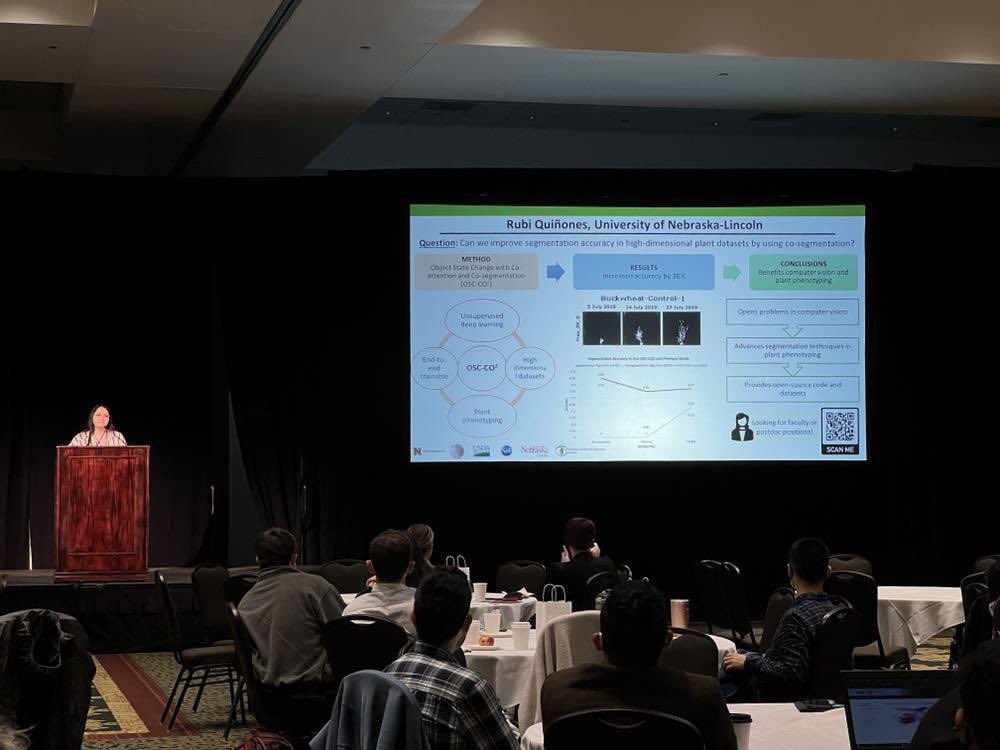
Collaborations raise everyone up. This is something computer engineering Ph. D candidate Rubi Quiñones has learned in her time at UNL.
Embracing collaborative efforts is one of the reasons she was recognized at the recent North American Plant Phenotyping Network (NAPPN) annual conference in Athens, Ga., in February — earning the 2022 NAPPN Graduate Student Award for Research and Service.
The award honors a candidate who not only has a strong body of research, but also progresses the field of phenotyping through interdisciplinary research, collaborative work, mentorship and outreach. The latter is important, she said, because the field is still growing and gaining awareness.
“Plant phenotyping isn’t as big as drones, for example,” Quiñones said. “The (award committee members) were looking for someone who understands that and can spread the enthusiasm.”
Phenotyping wasn’t originally on her radar, either. She found a path into this area when she became interested in computer vision, which trains computers to interpret the visual world.
Quiñones took a class called data mining, which used remote sensing of images such as fields and plants, which soon piqued her interest.
“That’s very intriguing visually, as well as how much information we can get from these images,” she said. “We’re trying to get to the point in computer imaging to mimic a human’s eyes. I found that very interesting.”
This interest led her into plant phenotyping research, which has some overlap through plant imaging. She is currently working to create deep learning algorithms and multi-dimensional datasets and phenotypes to advance segmentation techniques in plant phenotyping and computer vision.
“I created a deep learning network that increased segmentation accuracy of plant datasets, more specifically multidimensional plant data sets,” she said. “I leverage information from all the dimensions for segmentation.”
Although the areas of research for computer engineering and plant phenotyping can be quite disparate, she believes both areas have much to learn from each other.
“I think we (computer scientists) can bring automation; we can bring these tools to save time, save resources, save money,” she said. “We can develop tools with computer vision to get the measurements for plant scientists really quickly. The faster you have that information, the more research you can do in the field.”
Once Quiñones graduates in May, she hopes to work in a faculty role to continue being a mentor to students. She also hopes the connections she made at the NAPPN conference will generate future partnerships.
“There was an emphasis on interdisciplinary work (at the conference) and I got ideas from that,” she said. “I made some friends, and hopefully collaborations occur.”